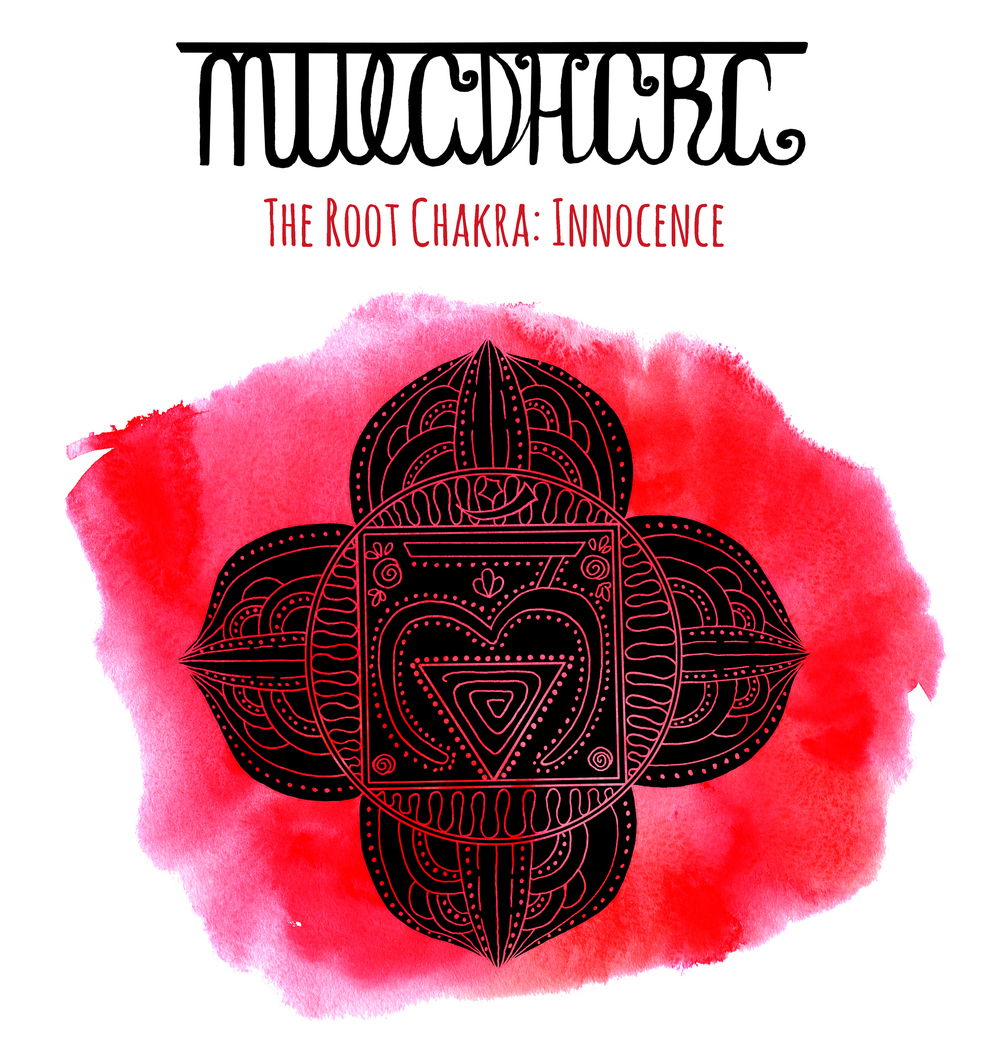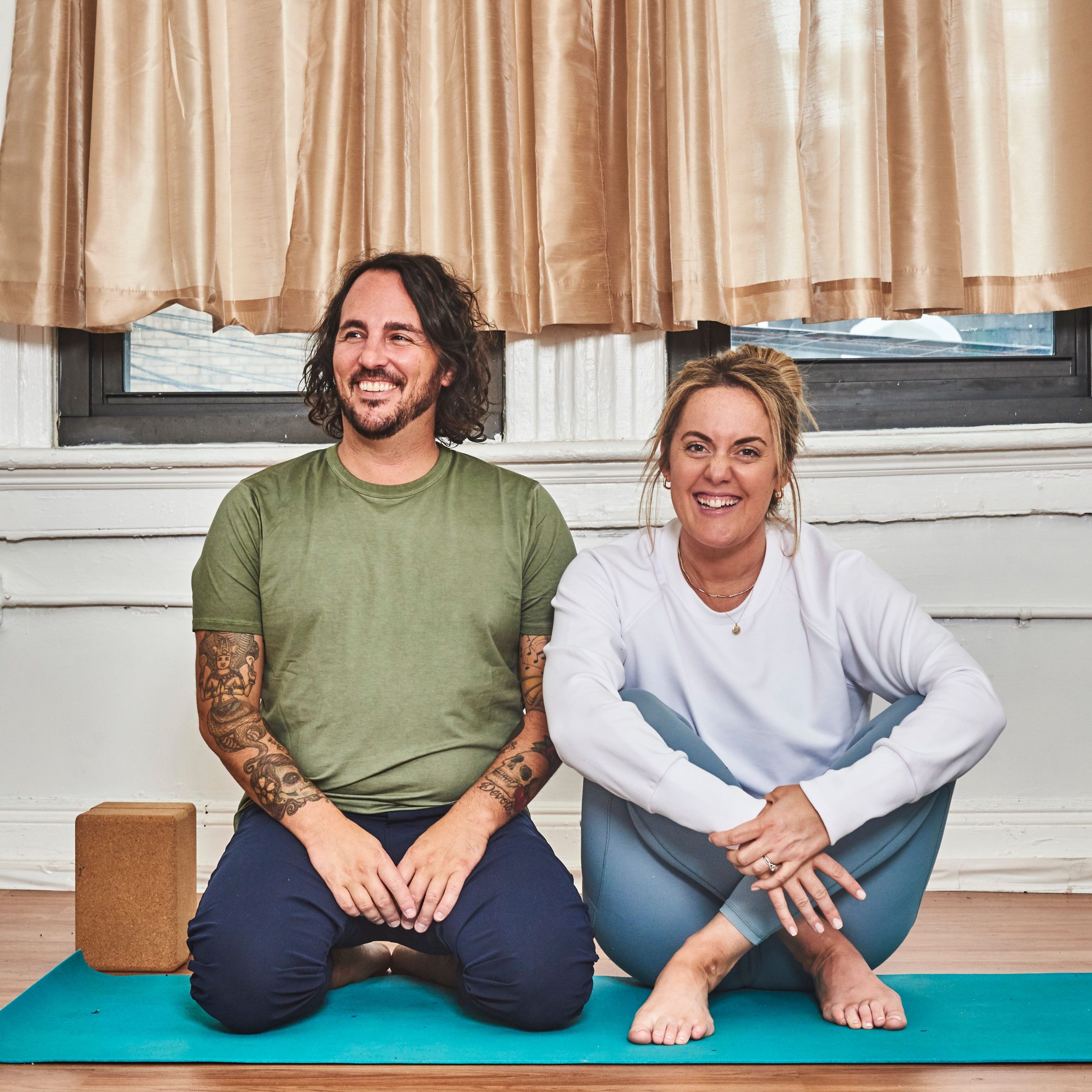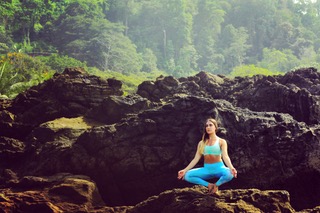
This pose is beneficial for your Root chakra. You may have heard an instructor say Muladhara Chakra in a yoga class, but what does that mean? The word chakra translates to “wheel” or “vortex”. The ancient Indian texts describe chakras as energetic wheels or vortexes that spin in the body and create our vital life-force energy, otherwise known as Prana or Qi (Chi). While these ancient texts state that there are upwards of thousands of chakras, in most yoga classes there are 7 main chakras that are focused on.
Where Are They Located
 The first of these 7 primary chakras is called Muladhara, or the root chakra. The term ‘mula’ translates to root, and the term ‘adhara’ translates to foundation or base. Therefore, Muladhara is a perfect term for the first chakra. Yoga and Ayurveda, yoga’s ancient sister science, teach us that the root chakra is located at the base of the spine or coccyx. The anatomical location of this energy center includes the first three vertebrae and the pelvic floor or perineum. It’s additionally associated with the organs and structures responsible for elimination, the skeletal structure, and blood.
The first of these 7 primary chakras is called Muladhara, or the root chakra. The term ‘mula’ translates to root, and the term ‘adhara’ translates to foundation or base. Therefore, Muladhara is a perfect term for the first chakra. Yoga and Ayurveda, yoga’s ancient sister science, teach us that the root chakra is located at the base of the spine or coccyx. The anatomical location of this energy center includes the first three vertebrae and the pelvic floor or perineum. It’s additionally associated with the organs and structures responsible for elimination, the skeletal structure, and blood.
Description
The Muladhara chakra is said to be associated with our survival needs and encompasses the energy of the “Fight or Flight” response. It’s not just physically located at the root of the spine, but is said to be the root of our being. That which connects us not just to our physical body, but also to our surrounding environment. It includes our instincts and is the primal part of our being. The root chakra includes the part of us that is connected to family, and our need for food, shelter, and necessities for survival. This includes our abundance and if we can have our needs met.
There are also specific attributes descriptive of the 7 main chakras. For instance, the color associated with the root chakra is red, the element is Earth, the sound is LAM, the deity in Hinduism is Ganesha, and the list goes on. The Muladhara chakra is often depicted as a lotus flower with four petals, which has a symbolic meaning of the aspects of the psyche. It can also be depicted as an upside-down triangle, within other shapes, all of which symbolic and representative of the aspects of the root chakra.
Root Chakra And Yoga
Now that we’ve briefly gone over what the root chakra is and where its’ located, how does it apply to a yoga practice and why is it something to focus on? Yoga is all about the balance of body, mind, and energy. When something in our body is out of balance, usually we can tell that something is up. Similarly, our chakras can become out of balance. When the root chakra is out of equilibrium it can cause feelings of instability, fear, insecurity, sadness or a feeling of being stuck. When it’s in balance, it means that you can process through the ups and downs of life with more ease and grace, and release feelings of guilt or grief so that you can continue to move forward in life or access the upper chakras. On a physical level, an unbalanced root chakra is connected to low back pain, lower-body ailments, elimination problems, and water retention. Certain yoga poses can help bring the root chakra back into balance.
5 Yoga Poses for Muladhara Balance
 Sukhasana, Easy Pose: a seated cross-legged position, this pose allows the parts of the body associated with the root chakra to physically touch the ground. This pose is meant to invoke stability and a sense of trust from within
Sukhasana, Easy Pose: a seated cross-legged position, this pose allows the parts of the body associated with the root chakra to physically touch the ground. This pose is meant to invoke stability and a sense of trust from within
Balasana, Childs’ Pose: a supportive and grounded posture often seen at the beginning of a yoga class, or as a resting point.
Uttanasana, Standing Forward Fold: this pose can promote a sense of calm, with the feet firmly planted on the ground and the head below the heart, it can bring a sense of relief for this with low back pain.
Salabhasana, Locust Pose: a belly-down pose that keeps you close to the Earth and strengthens the back muscles.
Prasarita Padottanasana a, Wide-Legged Forward Fold: this pose stretches the groin and is said to help boost confidence and reduce feelings of depression.
Learn More About Muladhara Chakra From YogaRenew
It can be fascinating and interesting to look at how the physical and energetic aspects of our being relate and interact. What do you think of the Muladhara chakra? Contact YogaRenew in order to learn more.
Join our mailing list for incredible weekly content!






